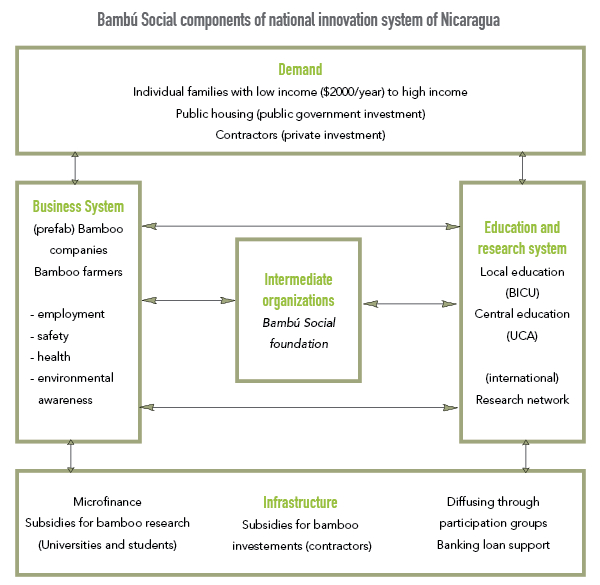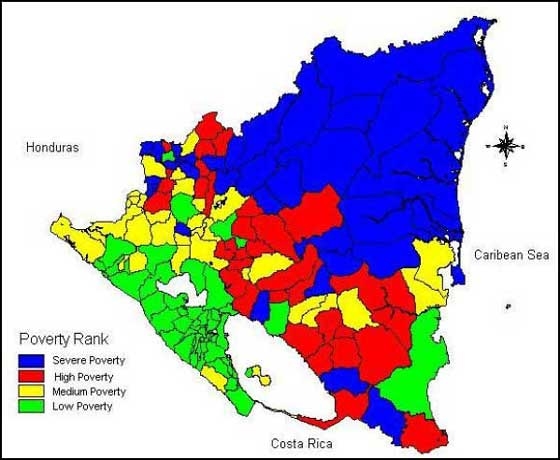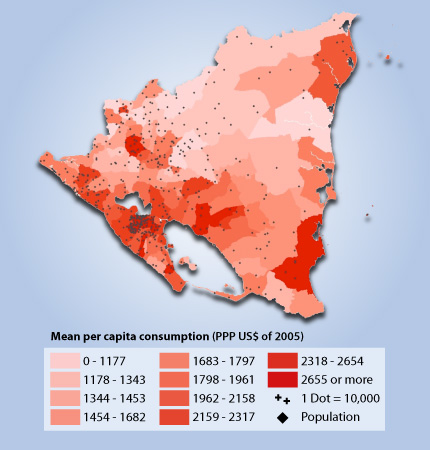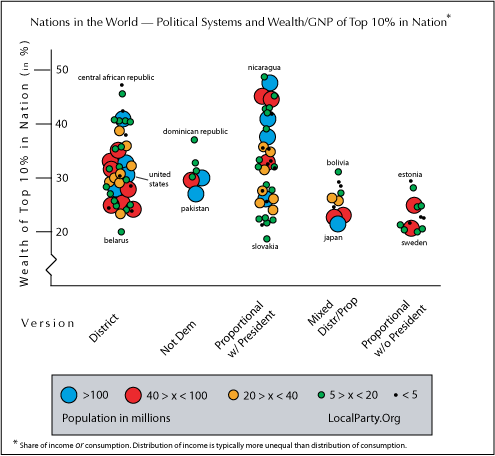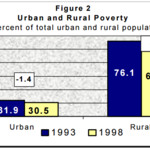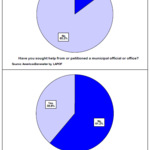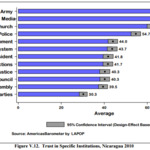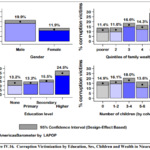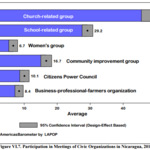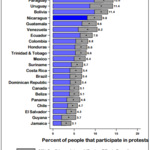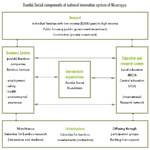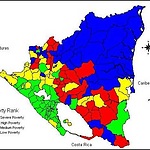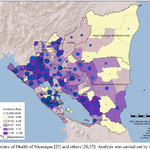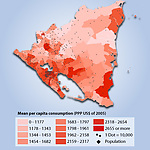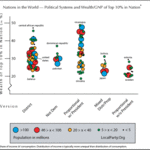Bibliography
Bank, W. (n.d.). http://web.worldbank.org/.
Briney, A. (n.d.). Geography of Nicaragua. Retrieved from About Education: http://geography.about.com/od/nicaraguamaps/a/nicaragua-geography.htm
Freedom House - “Authoritarianism Overshadows Nicaraguan Elections, ”. (2008, 11 7). “Authoritarianism Overshadows Nicaraguan Elections. Retrieved 4 8, 2010, from Freedom House.
John, A. B., & Seligson, M. A. (2010). Political Culture of Democracy in Nicaragua. ©LAPOP.
LocalParty. (n.d.). Equal Voter Democratic World. Retrieved from Local Party: http://localparty.org/democracy.html
Nicaragua, G. o. (2001). A strengthened Growth and Poverty Reduction Strategy.
Sachs, J. (2005). End of Poverty.
Sandina, L. (2014, 10 16). Nicaragua calificada como segunda economía más libre en Centroamérica. Retrieved from La Sandino: http://www.lasandino.com.ni/articulos/ver/titulo:321-nicaragua-calificada-como-segunda-economia-mas-libre-en-centroamerica
Schneider, M. C., & Nájera, P. (2012). Leptospirosis Outbreaks in Nicaragua: Identifying Critical Areas and Exploring Drivers for Evidence-Based Planning. International Journal of Environmental and Public Health.
WorldBank. (2014). Retrieved from World Bank data: data.worldbank.org
How does the project Bambú Social (2.0) become successful?Which actors and factors are crucial for the successful entrepreneurship and innovation? This is answered with the functions of Innovation Systems.
There are two sets of functions of innovation systems. Hekkert describes the functions of innovation systems of developed countries, where Van Alphen describes to functions that are more suitable for underdeveloped countries. A choice has to be made for which functions to use. For the analysis on Nicaragua, El Rama, it would be more suitable to encounter the situation (actors and factors) through the functions of Van Alphen. Because Nicaragua is very big, it is very likely for some situations to differ. Therefore the functions are applied to El Rama and similar municipalities. Also the factors are oriented on the housing market, which is of most interest for Bambú Social.
- Entrepreneurial Activities. In El Rama there’s a lack of entrepreneurial activity. The first team set up different production processes of for example baskets. This doesn’t happen anymore. This is so because of a lack of management and guidance of the process. Also the businesses aren’t using the opportunities by using available resources for the right demand.
- Creation of adaptive capacity. The BICU University students do learn about building processes and agriculture. However, innovation and new courses come from outside. Last team gave a course at the BICU to teach them about sustainable constructions. BICU itself does not develop new knowledge about bamboo, same as UCA University in Managua. They do appreciate this new material and knowledge, but need an external stimulance to develop some interest in research in order to develop new technologies of bamboo. Institutions from abroad could provide and facilitate this research, but it has to be done locally, because of the material.
- Knowledge diffusion through networks. Last year students from UCA made an urban planning for El Rama, after Bambú Social visited UCA and linked the capital with the municipality, the word was spread. In the capital there may be a lot of knowledge, but this isn’t naturally diffused around the country.
- Demand articulation. At the moment, in the housing industry, there is no matching demand with the supply because there’s no information exchange. People now live in terrible houses, while a cheaper, more sustainable option of bamboo houses is available. There’s a lack of investigation of the demand and supply. People do need better houses, but are obstructed by the use of bad materials.
- Market formation. Most houses are being built by the families their selves. There is a market for the current construction materials, but so expensive, bad quality housing is the result. The government does invest in social housing and entire villages are being provided by concrete houses. There is not yet a bamboo branch in the housing industry because of a lack of knowledge.
- Resources mobilization. As said before, there are few mass housing projects funded by the government. Beside the fact that these are huge investments and these aren’t the first priority of the government, it is also too expensive due to a bad choice of material (that doesn’t fit with the environment). Poor people also don’t have access to a bank and a loan provided by the bank because of extreme poverty. There’s a serious lack of resources in the current housing market.
- Creation of legitimacy. Despite the extreme poverty and bad housing, the current living situation is considered normal. People are not actively engaged with better housing, because of the fact that they usually have a piece of roof above their head (literally), and gaining money to buy food is more important. For the people with a bit of a higher standard, they do care about the appearance of their house, but do not have the opportunity to explore with bamboo because of a lack of knowledge. Bambú Social and eventually the population should counteract resistance of the change of construction material, by proving that bamboo housing is feasible.
- Infrastructure networks. There are roads in Nicaragua and El Rama, but they are not all suitable for the transportation of construction material. For a functional (bamboo) housing market, new roads have to be built. There is infrastructure of electricity and sometimes even water net, but is far from accessible for the poor people. For Bambú Social it is important to design a house, independent of the infrastructure.
By applying all the functions on the current situation, one main conclusion could be drawn: there’s a serious lack of knowledge about the available construction material bamboo. Due to a lack of management and guidance, there are little entrepreneurial activities in El Rama, this should be stimulated by the directors of El Rama. People are interested in the bamboo, but there has to be an extra push coming from Bambú Social. Building with bamboo is spread easily, but this has to be done by the Universities. Building companies should invest better the housing demand and possibilities. By articulating better on the demands and responding to the research at the Universities, the housing market could function much better. People do not have access to loans yet; banks and micro finance organizations could provide this. The designers of (bamboo) housing should take into account that the house could function be independent of the infrastructure. After all, Bambú Social must stimulate all the actors mentioned before to use bamboo as a standard construction material, by responding to the lacks in the current system.
How can Bambú Social contribute to development? How does entrepreneurship and innovation result in development? The answer could be found by doing a cultural analysis and an analysis on the national innovation system.
All figures are gained ©LAPOP(John & Seligson, 2010).
Cultural analysis and civil society
- Power distance or hierarchy – egalitarianism. It is clear the government has great power and average Nicaraguan people do not seem too involved with the local government. Of course in the governmental system there has to be a hierarchy. The figures show that even with municipal offices the gap between the population and governors is big. It is still not clear if this has something to do with power distance.
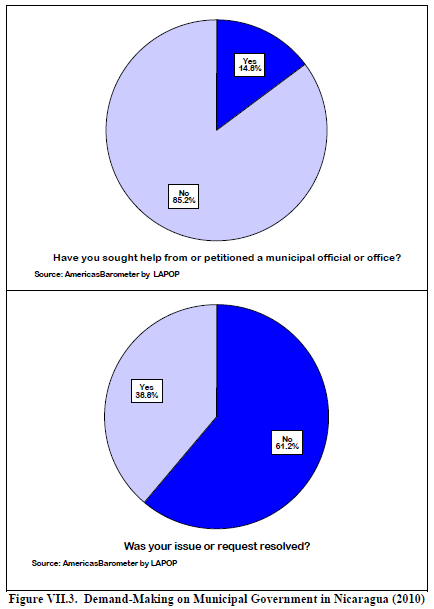
- Individualism – collectivism. The high participation rate (in elections and civic groups), show that people see the utility in cooperating. There’s also a high expectancy ratio of the institutions.
- Masculine – feminine. The belief that the state has a major responsibility for promoting social welfare has an average level of agreement of 85 on the 100 point scale. Nicaraguans strongly endorse the notion that the government holds the major responsibility for promoting the welfare of citizens and taking care of individuals by reducing inequality, promoting employment, and providing pensions and health care. Age is not significantly related to party identification. This consensus among Niraguans means that the country is controlled by a feminine state.
- Certainty avoidance – traditionalism. The country can be considered very traditional. The diagram below shows in what institutions gain the most trust by the population. The upper institutions (except for media) the army, Catholic Church, national police, national government, are very much trusted, but also the most stable institutions. This could prove that Nicaraguan people do like traditionalism and dislike uncertainty (like political parties and elections).
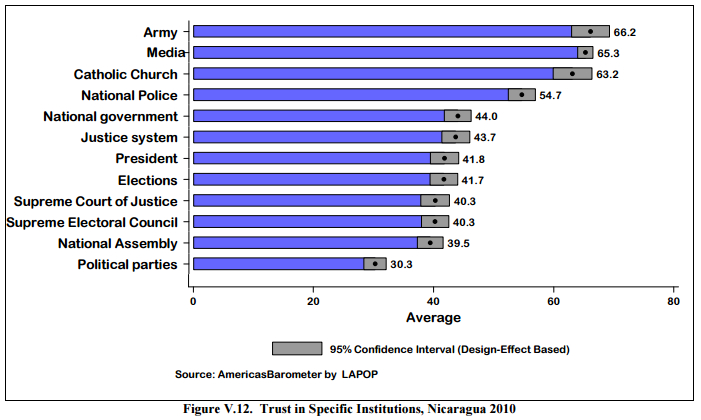
- Universalism – particularistic. Nicaragua is definitely particularistic. The most severe consequence is corruption. The graphs below show that relation between bribe activities and gender, wealth and education.
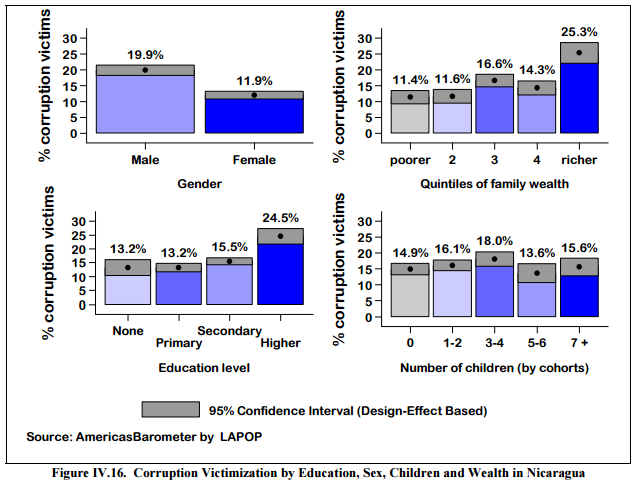
- Specific – diffuse. Nicaragua is a country with intermediate levels of interpersonal trust compared to other countries in the region. The trust in neighbors increases with education and age but that it suffers from a perception of personal insecurity. Contrary to expectation, civil society activity in Nicaragua has little effect on developing trust. When Nicaraguans organize to collaborate with one another to better the community they live in it improves their trust in their neighbors. It can be concluded that Nicaragua is therefore very diffuse.
- Neutral – affective. Related to the previous answer, it can be said that diffuse cultures (high context) are relatively affective, but only in a different way. Because of the fact the trust is low, it can be concluded that people do not show emotions in public. However, the high participation rate of civic organizations shows that there is an urge to express opinions and feelings with other similar-like people.
- Status by achievement or position. The corruption is very high; this does not automatically mean that people achieve their status by position. But the figure does show that corruption increases as the wealth goes up. This indicates that people more inclined to give bribal money in order to get what they want. It can be concluded that status is quicker gained by position than by achievement.
- Sequential – synchronous. It is generally known that peoples in Latin America are in general sequential ordered.
- Internalism – externalism. It is not directly clear how people get motivated. There is some data about the participation groups (see next figure), but you couldn’t tell if it’s internal motivation of external motivation (due to bad causes). The next figure tends that the participation is most external driven, because the participation in protests is relatively high in the region.
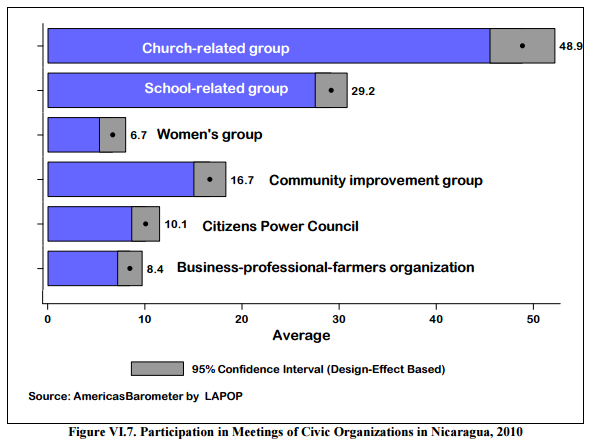
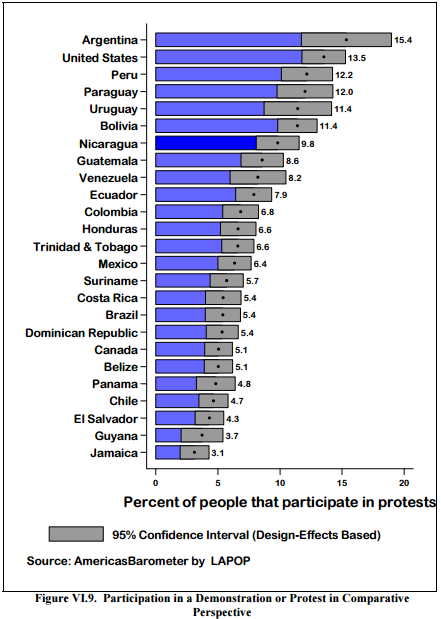
- Civil Society: realignment of individuals and organizations independent from family loyalty and state authority. Involvement in civil society organizations varied widely across group type and has stabilized after a long post-revolutionary decline. The only Nicaraguan group type with a significant increase in participation since 2004 was Citizen Power Councils. Political. Young Nicaraguans, like their older fellow citizens, generally expressed democratic norms. The young were more tolerant than older Nicaraguans of homosexuals and gay marriage, but still on average disapproved of both. Younger Nicaraguans participated in politics less than older Nicaraguans in many ways, including civil society activism.
Nicaraguans’ civil society engagement contributed greatly to mobilize their political participation. Involvement in community improvement groups and in Citizen Power Councils (CPC) each contributed greater involvement in other types of political participation. CPC involvement associated with greater protesting. Levels of civil society engagement overall appear essentially static since 2006 except for involvement in CPCs which rose from 2008 to 2010. This elevated CPC and community group involvement resulted in recent improvement in contacting public officials and in engaging local government. Sandinista sympathizers and voters were more active in the Citizen Power Councils than in community improvement organizations, so the FSLN and its supporters likely enjoyed increased influence over public policy. In 2006, Daniel Ortega Saavdra, an FSLN candidate (Sandanista), was elected.
Freedom House downgraded Nicaragua’s political freedom score from a 3 to a 4 in 2009. Freedom House criticized “President Daniel Ortega’s government” and cited as problems for political liberty “a pattern of authoritarian measures directed against opposition parties, civil society, and media [and] hostility exhibited towards human rights defenders.” (Freedom House - “Authoritarianism Overshadows Nicaraguan Elections, 2008)
By analyzing all 11 commandments of culture and the concept of civil society, it is clearer how Bambú Social can contribute to the development in Nicaragua. Despite the extreme poverty, the population could be seen a cohesive and participating mass, because of the collective and feminine character. The government and NGO’s can utilize this by meeting the right tactics to create goodwill and address developing problems. Particularism (corruptions) is still a major pitfall for the Nicaraguan government. The average population seems ready for institutional reforms, but the bigger the wealth, closer to the government, the corruption increases. Nicaragua should invest in good governance (Paul Collier and Dambisa Moyo) and capabilities (Amartya Sen). This brings us to the next part, where Bambú Social comes in.
National innovation systems
The scheme of national innovation systems (by Arnold and Bell 2001), is adjusted for the project Bambú Social. The ideal situation of the influence of the foundation is explained. Enablers and barriers are also summed at the end.
The direct components of which Bambú Social has influence on are the education and research system and business system. By doing research and sharing knowledge with the local students and Universities, the foundation will contribute to bamboo research. By working with local craftsmen and visiting the bamboo farm, the foundation could provide starting companies with entrepreneurial activities. The aim of both components is to upgrade and upscale the bamboo usage in the housing market. The goal for Bambú Social is to eventually let go of the components so that they can develop thereselves independently of an intermediate organization (external help).
There is a demand of affordable and sustainable housing. This does not automatically mean that there’s a demand for bamboo housing. Through participation groups the word of benefits of bamboo housing can be spread. The foundation could also set up a microfinance system where locals can rent money from abroad and pay back their houses in time. The fiscal, subsidy and banking system can not be changed directly by Bambú Social. However impact on local government is not excluded.
Finally, the enablers and barriers are summed.
|
Enablers |
Barriers |
|
Universities |
Government (fiscal system |
|
Bamboo farmers |
Climate |
|
New bamboo companies |
|
|
Participation groups |
|
|
Local government |
|
|
Other |
|
|
Collectivism (High participation rate) |
Diffuse |
|
Feminine |
Power distance |
|
Affective |
Traditionalism |
|
Internalism |
Particularism |
|
|
Status by position |
|
|
Externalism |
Poverty Analysis
As an additional tool, the poverty analysis has been done on Nicaragua. In Clinical Economics by Jeffrey Sachs, poverty is encountered by seven aspects which can be used as tools to diagnose the poverty in a country (Sachs, 2005). In this case Nicaragua. An elaborated research could be done, but only the highlights are mentioned. For an overview of the poverty in Nicaragua (in 2001), the following image is shown.
(WorldBank, 2014)
- Poverty traps
- Climate shocks: Nicaragua is frequently being hit by earthquakes and hurricanes. These have severe consequences for the country. Hurricane Mitch is the most recent, deadliest Atlantic hurricane. Nearly 11,000 people were confirmed dead, and almost as many reported missing. Deaths were mostly from flooding and mudslides, and dropped nearly 36 inches (900 mm) of rain. The flooding and mudslides damaged or destroyed tens of thousands of homes, with total damage amounting to over $5 billion (1998 USD, $6 billion 2006 USD).
- Environmental: The environment of municipalities where poverty rate is measured has a lot of influence on the outcome. As many more countries, urban areas are wealthier than rural areas. The diagram shows that in Nicaragua almost 70% of the people live beneath the poverty line. (Nicaragua, 2001)
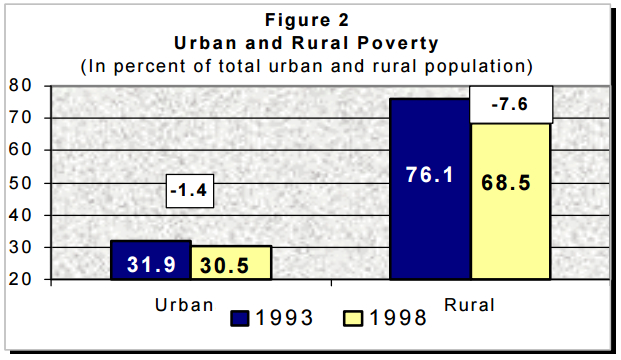
- Disease: Leptospirosis is an epidemic-prone zoonotic disease that occurs worldwide. In Central America, leptospirosis outbreaks have been reported in almost all countries; Nicaragua in particular has faced several outbreaks. (Schneider & Nájera, 2012)
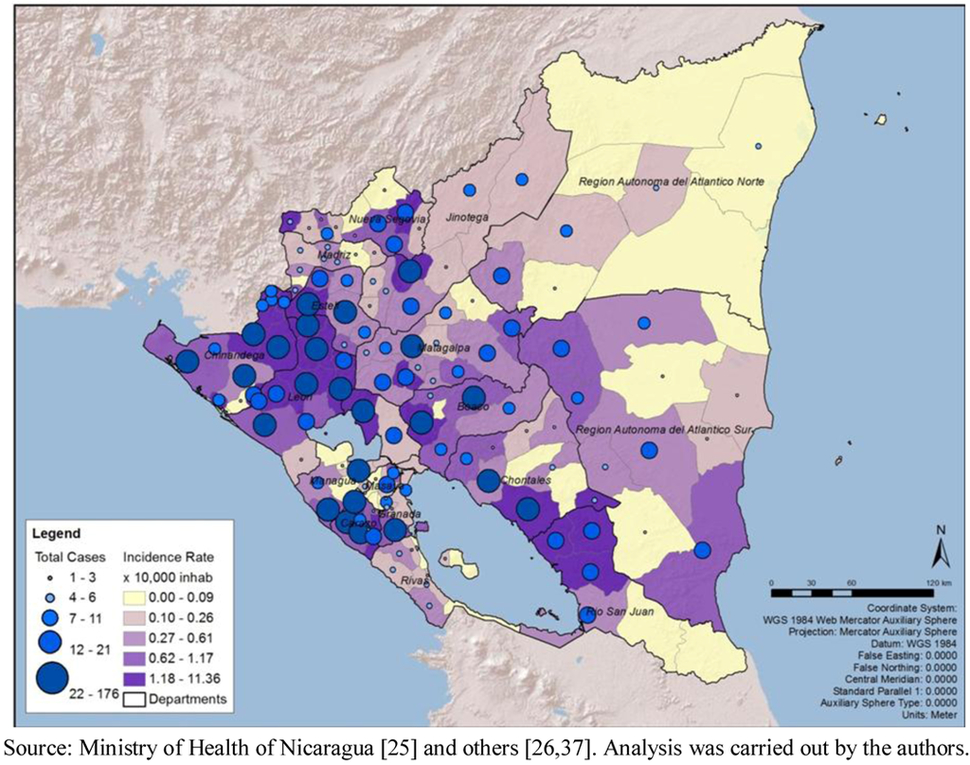
Figure 1 Total number of cases of leptospirosis, cumulative incidence rate (10,000 populations), by municipality, Nicaragua, 2004–2010
2. Economic policy framework
- Despite the extreme poverty in Nicaragua, they do have a relatively open economy. In October 2014 Nicaragua has been qualified as the second most open economy in Central America. They scored a 7.44 out of the 10, after evaluating aspects such as the size of government and spending; respect for private property; monetary stability; freedom of international trade and labor regulations; access to credit and facilitating trade and business (Sandina, 2014).
The figure below shows the mean capita consumption per municipality in 2005.
3. Fiscal framework and fiscal trap
- Does public investment needs meet poverty reduction targets? Nicaragua's public spending in the social sectors is higher than in most Central American countries. Such spending is not well-targeted to the poor and results in inadequate funding for basic services. Per student spending in primary education is US$55 per year compared to a Latin American average of US$100. At the same time, higher education, which was shown in the poverty assessment to serve the non-poor exclusively, receives US$800 per student per year. Nicaragua's higher/primary spending ratio (14.5 times) is the second highest in the region (after Brazil). In 1994, annual per capita public health care spending was US$23.2, higher than that of any other Central American country except Costa Rica, and much higher than is typical for an economy with a similar GDP per capita. However, the coverage of primary health care is insufficient.
- The picture above shows extremes of wealth of the top 10% of nations in different democratic forms. Nicaragua has proportional and presidential elections. Presidential elections are not proportional elections; they are an addition to a democracy which in itself is a winner-take-all election. Together this forms a specific mix of proportional plus district elections (LocalParty). The figure shows that Nicaraguas top 10% wealth stands out, compared to other countries with simular election systems, with almost 50% of the GNP.
- This shows that there’s a extreme unequal ratio between the rich and the poor.
4. Physical geography
The recovery of the agricultural sector has been slow due to several sector-specific constraints, mentioned below. (WorldBank, 2014)
- The inadequate implementation of sectoral policies and the lack of a strategy for addressing rural poverty. There is little coordination among institutions, which have weak formulation and implementation capacity. No emphasis has been placed on defining policies and programs that are cost-effective while also benefiting poor farmers, such as agricultural research, training and extension services.
- Insecurity of land tenure and inefficient land markets. Although the government is addressing this issue, progress is slow.
- Although many programs exist, there is a lack of viable financing schemes for small and medium- size farmers, and many programs use credit as a means to transfer a subsidy or social assistance.
- Although Nicaraguan basic grains can compete effectively at the regional level, small producers are unable to benefit because of the high costs of information, poor rural infrastructure (particularly rural roads), the high costs of transportation, and non-tariff barriers, such as complicated and discretionary export requirements.
5. Governance patterns and failures
- Today Nicaragua's government is considered a republic. It has an executive branch made up of a chief of state and a head of government, both of which are filled by the president and a legislative branch comprised of a unicameral National Assembly. Nicaragua's judicial branch consists of a Supreme Court. Nicaragua is divided into 15 departments and two autonomous regions for local administration.
- Since the independence, Nicaragua underwent several civil wars and rival political groups. After 1990, when the dictatorship has taken place for democracy, the government was focusing on economy stabilization and improving human rights. Despite the goal to end government corruption, the last presidents have been each marred with corruption.
6. Cultural barriers
- Nicaragua was colonized by Spain and has a similar culture to other Spanish-speaking American countries. The eastern half of the country, on the other hand, was once a British protectorate, and English spoken domestically along with Spanish and indigenous languages.
- Religious freedom and tolerance are promoted both by the government and the constitution, there is no separation.
- There are little signs of significant cultural barriers.
7. Geopolitics
- From 1909 to 1979 the relationship with the United States has improved, especially during the dictatorship of Samoza. When the Sandanistas took over Nicaragua, all US aid was suspended and an embargo was placed on the trade between Nicaragua and the US.
Institutional Reform (WorldBank, 2014)
- To implement the government's education strategy and to improve the quality and increase the internal efficiency of primary education, more resources are needed at this level. To this end, the generous subsidization of higher education must stop. Improving targeting of pre-primary and secondary education resources is also needed. Because the purpose of publicly financed pre-primary programs is to compensate children from disadvantaged backgrounds, they should be exclusively targeted to the extreme poor. In the case of secondary education, where the poverty assessment found that public spending is also regressive, there is ample room for cost recovery. In the health sector, increasing the access of the poor will require further reallocating public expenditures toward primary health care and increasing cost-recovery from the non-poor who were found to be major users of public health services. There is ample room for cost recovery, particularly in urban areas.
- Apart from macroeconomic fragility, political instability, and an overvalued real exchange rate in competitiveness terms, the poverty assessment found that the recovery of the agricultural sector has been slow due to several sector-specific constraints:
- The inadequate implementation of sectoral policies and the lack of a strategy for addressing rural poverty. There is little coordination among institutions, which have weak formulation and implementation capacity. No emphasis has been placed on defining policies and programs that are cost-effective while also benefiting poor farmers, such as agricultural research, training and extension services.
- Although many programs exist, there is a lack of viable financing schemes for small and medium- size farmers, and many programs use credit as a means to transfer a subsidy or social assistance.
- Although Nicaraguan basic grains can compete effectively at the regional level, small producers are unable to benefit because of the high costs of information, poor rural infrastructure (particularly rural roads), the high costs of transportation, and non-tariff barriers, such as complicated and discretionary export requirements.
